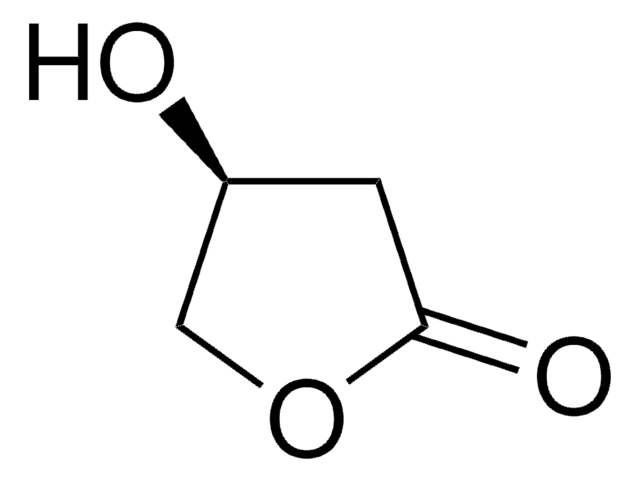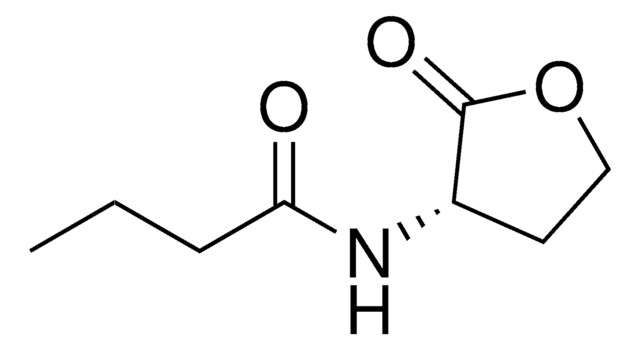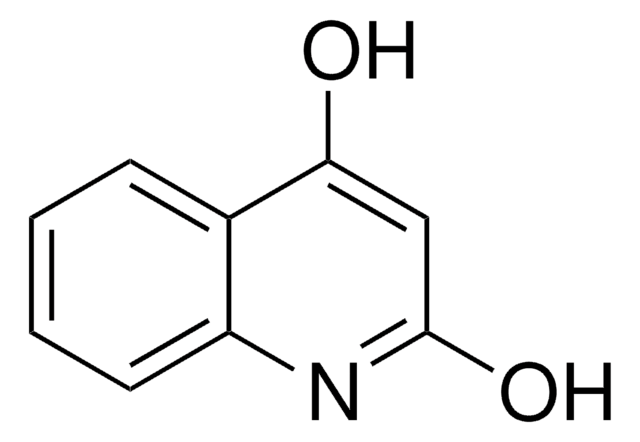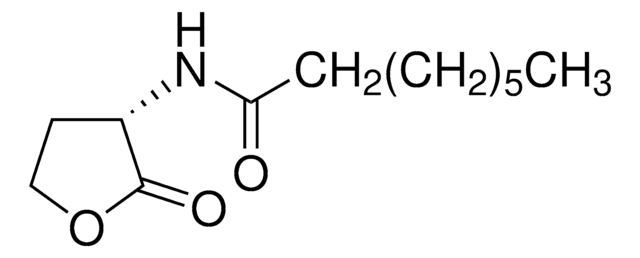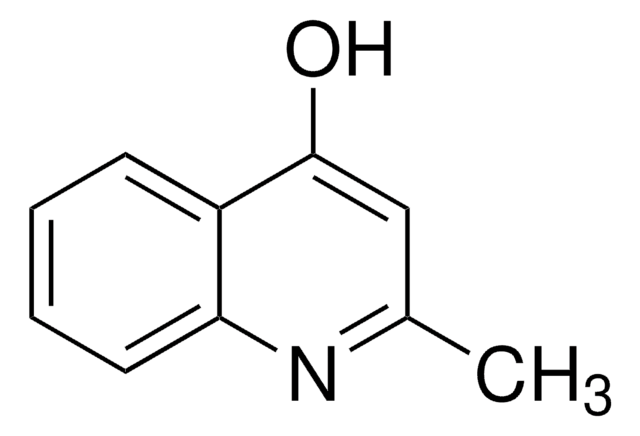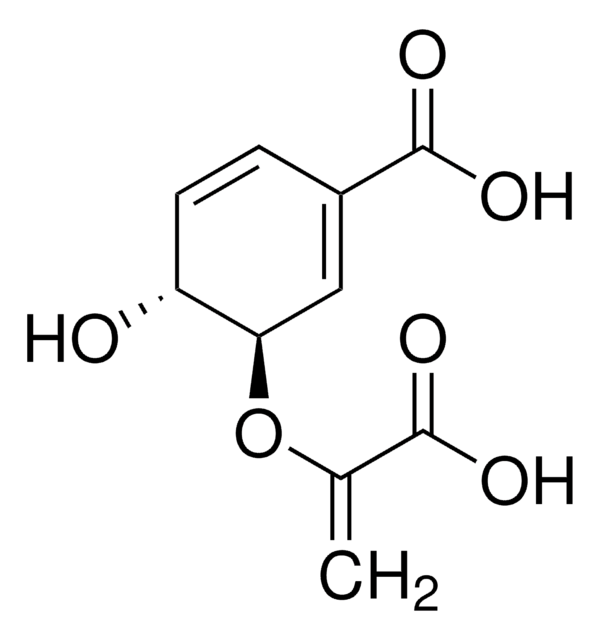Alle Fotos(1)
Wichtige Dokumente
94398
2-Heptyl-3-hydroxy-4(1H)-chinolon
≥96.0% (HPLC)
Anmeldenzur Ansicht organisationsspezifischer und vertraglich vereinbarter Preise
Alle Fotos(1)
About This Item
Empirische Formel (Hill-System):
C16H21NO2
CAS-Nummer:
Molekulargewicht:
259.34
MDL-Nummer:
UNSPSC-Code:
12352005
PubChem Substanz-ID:
NACRES:
NA.25
Empfohlene Produkte
Qualitätsniveau
Assay
≥96.0% (HPLC)
Form
powder
Lagertemp.
−20°C
SMILES String
CCCCCCCC1=C(O)C(=O)c2ccccc2N1
InChI
1S/C16H21NO2/c1-2-3-4-5-6-11-14-16(19)15(18)12-9-7-8-10-13(12)17-14/h7-10,19H,2-6,11H2,1H3,(H,17,18)
InChIKey
CEIUIHOQDSVZJQ-UHFFFAOYSA-N
Allgemeine Beschreibung
2-heptyl-3-hydroxy-4-quinolone can function as an intercellular signal.
Anwendung
Quorum sensing is a signaling system used by bacteria to coordinate activity based upon their population density. The system involves the exchange of signaling molecules among bacteria via cell receptors. Heptyl-3-hydroxy-4(1H)-quinolone (PQS) is a quorum sensing-regulated virulence factor used to induce and study the regulation of virulence genes such as those involved in iron scavenging.
Verpackung
Bottomless glass bottle. Contents are inside inserted fused cone.
H-Sätze
Gefahreneinstufungen
Aquatic Chronic 4
Lagerklassenschlüssel
11 - Combustible Solids
WGK
WGK 3
Flammpunkt (°F)
Not applicable
Flammpunkt (°C)
Not applicable
Hier finden Sie alle aktuellen Versionen:
Besitzen Sie dieses Produkt bereits?
In der Dokumentenbibliothek finden Sie die Dokumentation zu den Produkten, die Sie kürzlich erworben haben.
Kunden haben sich ebenfalls angesehen
Doreen S W Hooi et al.
Infection and immunity, 72(11), 6463-6470 (2004-10-27)
Pseudomonas aeruginosa releases a spectrum of well-regulated virulence factors, controlled by intercellular communication (quorum sensing) and mediated through the production of small diffusible quorum-sensing signal molecules (QSSM). We hypothesize that QSSM may in fact serve a dual purpose, also allowing
Stephen P Diggle et al.
Chemistry & biology, 14(1), 87-96 (2007-01-27)
Pseudomonas aeruginosa produces 2-heptyl-3-hydroxy-4(1H)-quinolone (PQS), a quorum-sensing (QS) signal that regulates numerous virulence genes including those involved in iron scavenging. Biophysical analysis revealed that 2-alkyl-3-hydroxy-4-quinolones form complexes with iron(III) at physiological pH. The overall stability constant of 2-methyl-3-hydroxy-4-quinolone iron(III) complex
E C Pesci et al.
Proceedings of the National Academy of Sciences of the United States of America, 96(20), 11229-11234 (1999-09-29)
Numerous species of bacteria use an elegant regulatory mechanism known as quorum sensing to control the expression of specific genes in a cell-density dependent manner. In Gram-negative bacteria, quorum sensing systems function through a cell-to-cell signal molecule (autoinducer) that consists
Jintae Lee et al.
Microbial biotechnology, 2(1), 75-90 (2009-01-01)
Indole is an extracellular biofilm signal for Escherichia coli, and many bacterial oxygenases readily convert indole to various oxidized compounds including 7-hydroxyindole (7HI). Here we investigate the impact of indole and 7HI on Pseudomonas aeruginosa PAO1 virulence and quorum sensing
Jin-Hyung Lee et al.
FEMS microbiology letters, 329(1), 36-44 (2012-01-19)
The emergence of antibiotic resistance has necessitated new therapeutic approaches for combating persistent bacterial infection. An alternative approach is regulation of bacterial virulence instead of growth suppression, which can readily lead to drug resistance. The virulence of the opportunistic human
Unser Team von Wissenschaftlern verfügt über Erfahrung in allen Forschungsbereichen einschließlich Life Science, Materialwissenschaften, chemischer Synthese, Chromatographie, Analytik und vielen mehr..
Setzen Sie sich mit dem technischen Dienst in Verbindung.

